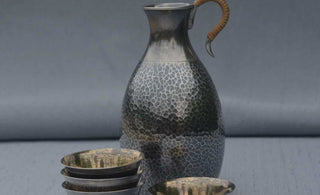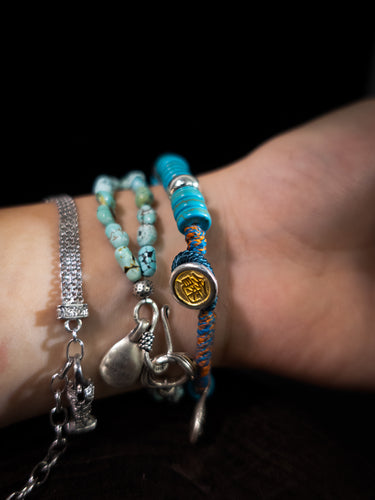
Unlocking the symbolism of Japanese antique lacquerware is an entrancing venture into a realm where every curve, color, and motif narrates a part of Japan's rich cultural and artistic heritage. This journey reveals how traditional Japanese lacquerware, known as Urushi, is not merely an object of aesthetic beauty but a tapestry of historical, spiritual, and societal symbols, deeply woven into the fabric of Japanese life. These masterpieces, crafted with meticulous care and unparalleled skill, hold within them a treasure trove of cultural significance. Each delicate stroke, each intricate design, is laden with symbolism that carries the essence of Japan's rich heritage. Join us on a journey as we unlock the hidden meanings and explore the enchanting symbolism found within Japanese antique lacquerware.
The Elegance of Urushi: A Testament to Nature's Gift
In the realm of Japanese antique lacquerware, there exists a medium that embodies the very essence of nature's gift – the elegance of urushi. Derived from the sap of the urushi tree, this precious substance is a testament to the harmonious relationship between man and nature. The process of transforming urushi into a work of art is a delicate dance between the artisan and the materials. Layer upon layer of lacquer is applied, polished, and refined, resulting in a surface that is as smooth as moonlit silk, as glossy as a mirror reflecting the soul. This technique, known as "nuri," not only enhances the aesthetic appeal but also serves as a protective shield, preserving the lacquerware for generations to come. The urushi tree, with its graceful branches and vibrant leaves, stands as a symbol of resilience and longevity. It is believed to possess mystical properties, its sap serving as a conduit between the earthly realm and the divine. The artisans who work with urushi understand that they are not mere craftsmen but guardians of a sacred tradition. With reverence and respect, they harness the inherent beauty of the urushi tree to create objects that transcend the limitations of time. As the lacquerware evolves over time, developing a patina that tells the story of its journey, it reflects the Japanese reverence for the passage of time and the embrace of imperfection as a mark of beauty. The imperfections that arise – the tiny cracks and subtle changes in color – are not seen as flaws but as a testament to the organic nature of the lacquerware. They are a reminder that life, like the lacquerware itself, is a dynamic and ever-changing tapestry. Just as nature has its seasons, so too does Japanese antique lacquerware. The lacquerware may don different hues as the years go by, evolving from vibrant reds to deep, lustrous browns. This metamorphosis is a reflection of the ebb and flow of life, where beauty is not stagnant but ever-evolving. It is a reminder that even in the face of transformation, the essence of the piece remains steadfast and true. The elegance of urushi extends beyond its physical properties. It transcends the realm of aesthetics and touches upon something deeper – the soul of Japan. Through the art of lacquerware, the Japanese people express their connection to the natural world, their reverence for the divine, and their appreciation for the beauty that surrounds them. It is a celebration of the delicate balance between humanity and nature, a testament to the eternal dance of creation and destruction that exists in all things.
Lacquerware Motifs Inspired by Nature: A Harmonious Symphony
In the realm of Japanese antique lacquerware, the natural world serves as an endless source of inspiration, infusing each piece with a harmonious symphony of motifs. Delicate cherry blossoms, with their ephemeral beauty, grace the lacquerware's surface, whispering of fleeting moments cherished. These ethereal blooms symbolize the transient nature of life, reminding us to embrace the present and savor every passing moment. Majestic pine trees, with their evergreen leaves, stand tall and proud, symbolizing longevity and endurance. Their unwavering presence invokes a sense of strength and resilience, reminding us to weather life's storms with grace and fortitude. The pine, standing against the test of time, becomes a silent witness to the passing seasons, a beacon of hope in the face of adversity. The graceful lotus flower, emerging from muddy waters in pristine bloom, symbolizes purity and spiritual enlightenment. It is a testament to the human spirit's ability to rise above the challenges and obstacles of life, emerging stronger and more beautiful than ever before. The lotus invites us to seek inner peace and harmony, to embrace our true potential and awaken the divine spark within. Beyond these well-known motifs, Japanese antique lacquerware also features a myriad of creatures from the animal kingdom. The noble crane, with its elegant form and outstretched wings, dances across the lacquerware's surface, symbolizing longevity and good fortune. Its presence evokes a sense of grace and serenity, reminding us to navigate life's journey with dignity and wisdom. The mythical dragon, a creature of immense power and wisdom, weaves its way through the lacquerware's intricate designs. Its sinuous form represents protection and prosperity, serving as a guardian against evil forces. The dragon's presence ignites the imagination and stirs the soul, reminding us of the boundless possibilities that await those who dare to dream. Each motif, carefully chosen and masterfully depicted, tells a story and carries a message. The lacquerware becomes a canvas upon which nature's poetry is written, a visual symphony that resonates with the viewer's heart and soul. It is an invitation to pause, to reflect, and to connect with the beauty and wisdom of the natural world.
The Lacquerware Allure of Gold and Silver: Illuminating the Soul
In the world of Japanese antique lacquerware, gold and silver occupy a place of prominence, casting a luminous glow upon the surface of these treasures. The technique of Makie, where gold or silver powder is meticulously sprinkled onto the lacquer, creates a celestial canvas that captivates the eye and stirs the soul. The shimmering particles, like stars in the night sky, add depth and dimension to the intricate designs and bring them to life. Gold, the embodiment of wealth and power, represents prosperity and auspiciousness. It is a symbol of the sun's radiant energy, illuminating the path of life. Silver, with its cool brilliance, signifies purity and tranquility. Together, gold and silver create a harmonious balance, a yin and yang of elemental forces that resonate with the human spirit. The use of these precious metals in Japanese antique lacquerware is a testament to the appreciation of beauty and the desire to infuse everyday objects with a touch of the extraordinary. Japanese antique lacquerware is not merely an artistic expression; it is a testament to the unparalleled craftsmanship and dedication of the artisans who have honed their skills over generations. Through centuries of refinement, these master craftsmen have passed down their knowledge and techniques, ensuring that the legacy of Japanese lacquerware lives on. The creation of Japanese antique lacquerware is a laborious and intricate process, demanding patience, precision, and unwavering attention to detail. From the selection of the raw materials to the final polishing, each step is infused with the spirit of the artisan. It is a dance of hands, where tradition intertwines with innovation, and where the past and the present converge.
In conclusion, the symbolism in Japanese antique lacquerware is a key that unlocks a rich cultural narrative. Each piece tells a story, woven from the threads of nature, mythology, color, and design. Some lacquerware pieces depict scenes from Japanese literature, history, or folklore. These scenes are narrative tools that preserve and pass down stories and cultural values through generations. In contemporary times, the symbolism in Japanese antique lacquerware continues to fascinate both art enthusiasts and collectors. It provides a window into the past, offering insights into the values, beliefs, and artistic sensibilities of historical Japan.Understanding these symbols enhances the appreciation of Japanese lacquerware, transforming each piece from a mere object of beauty into a meaningful representation of Japan's artistic legacy and cultural ethos.





























